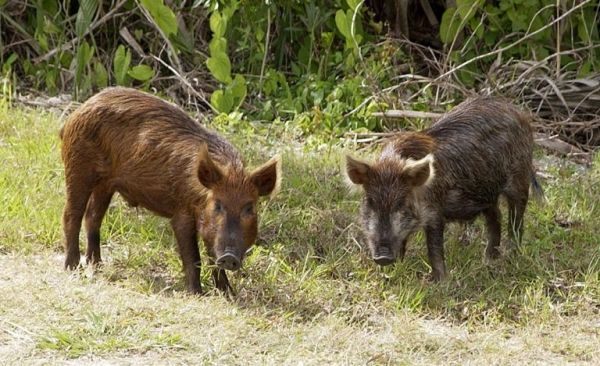Domestic pigs can be cute, but invasive wild pigs – also known as feral swine – are another matter entirely. First brought to the U.S. by early European settlers, wild pigs have earned a reputation for being highly destructive creatures in North America. With few natural predators aside from humans, and the highest reproductive potential of any mammal of similar size, two to six million are wreaking havoc in at least 39 states and some Canadian provinces. In Texas alone, they do hundreds of millions of dollars in damages annually. They tear up recreational areas, occasionally even terrorizing tourists in state and national parks, and squeeze out other wildlife. In agricultural fields, wild pigs may eat the crops or indirectly damage them, or the soil, by creating wallows, scent marking, rooting up plants, or destroying fencing and equipment.
A new study in the Ecological Society of America’s journal Ecological Applications investigates how the success of a wild pig invasion may be dependent on how they use their surrounding food resources, and how when it comes to agriculture, the pigs continue their destructive trend. Crop selection and usage behavior of wild pigs in agro-ecosystems are poorly understood, and it is challenging to predict how the availability of crops and non-agricultural food – such as grasses, acorns, bulbs, mushrooms, and animal matter like insects and reptiles –might impact the success of wild pig invasions.
Understanding how, when, and why they use different food resources is important because it may be a significant contributing factor in their expansion and invasion into new ecosystems.
Read more at: The Ecological Society of America
Wild pigs stop near the Kennedy Space Center Press Site in the Launch Complex 39 Area on their daily foraging rounds. Not a native in the environment, the pigs are believed to be descendants from those brought to Florida by the early Spanish explorers. Without many predators other than human, the pigs have flourished in the surrounding environs. (Photo Credit: NASA)


